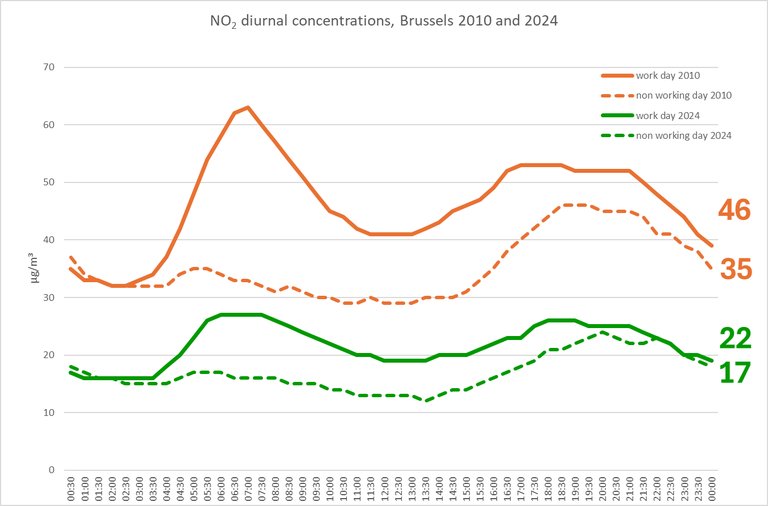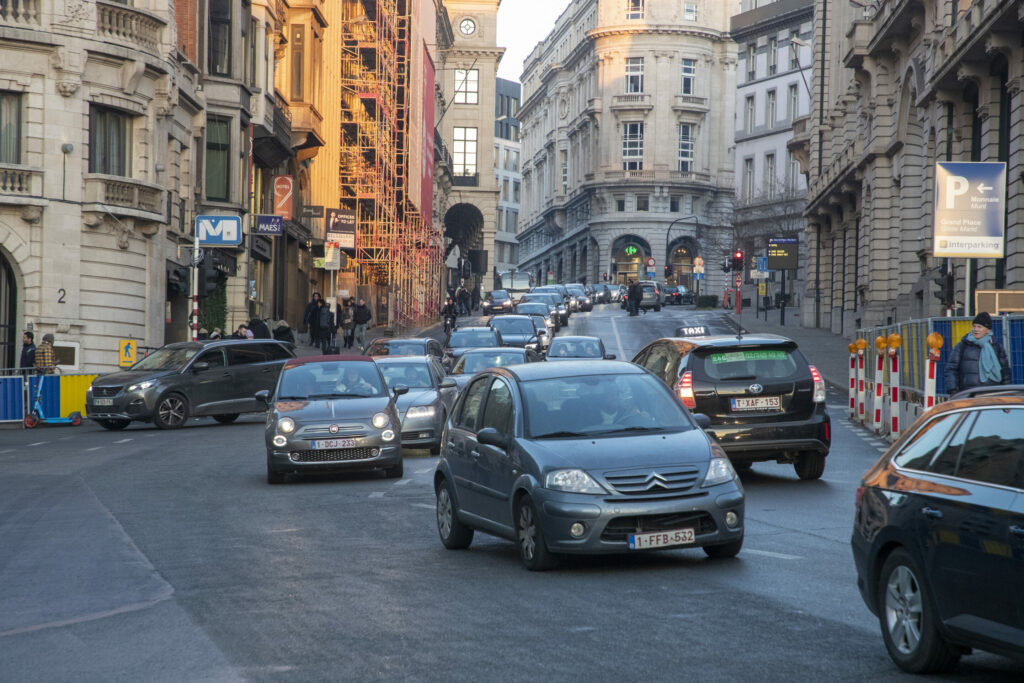This year's air quality in Belgium overall was similar to that in 2023. However, when it comes to traffic-related pollution in cities, significant improvements were recorded.
The air quality in Belgium this year was broadly similar to that in 2023, the Interregional Cell for the Environment (IRCEL) reported on Monday.
"Nitrogen dioxide (NO2) and particulate matter (PM2.5) concentrations still decreased slightly compared to 2023," the report read. The number of so-called "ozone days" – with at least one measurement site in Belgium exceeding the European information threshold of 180 µg/m³ – was also lower in 2024 compared to 2023.
In the long term, however, air quality improved significantly, the IRCEL noted.
Record-low urban pollution
The IRCEL's report includes a deep dive into NO2 in urban areas. This is a typical traffic-related pollutant: at high-traffic sites, there is a direct link between NO2 concentrations – the pollutant with the highest documented impact on human health – and (diesel) traffic.
"In 2024, as in 2023, NO2 concentrations were lower than during the first Covid-19 year of 2020," IRCEL experts noted. Concentrations were even slightly lower compared to last year.
"Never were NO2 concentrations on urban background concentrations as low as this year." This was the case at measuring stations in Ghent, Antwerp, Brussels and Charleroi.
The main reason for this is the drop in nitrogen oxide (NOx) emissions. "Specifically for car traffic, there are stricter emission standards. The "de-dieselisation" of the car fleet also plays a role, as diesel cars emit more NOx than petrol cars.

A graph highlighting the drop in NO2 concentrations in Brussels. Credit: IRCEL
Banning the oldest and most polluting cars through low-emission zones (LEZs) also has an effect. In Brussels, this resulted in a 30% drop in harmful pollutants.
Finally, wet weather has an impact. This year was the country's wettest on record, and there were no heatwaves. Air pollution is therefore diluted, resulting in lower air concentrations.
However, the World Health Organisation's (WHO) more stringent annual advisory value (10 µg/m³) is met only at the most rural monitoring stations in Flanders and south of the Sambre and Meuse valleys. "We are still a long way off meeting the WHO's health advisory values at every location in Belgium."
New stricter European limit values will come into force by 2030. "Additional measures will be needed to achieve the new NO2 limit values at locations with high levels of car traffic," the experts noted.
What about other pollutants?
The European daily limit for particulate matter is 50 µg/m³ (daily average concentration), which cannot be exceeded for more than 35 days. This year, the limit was not exceeded at any measurement site.
Particulate matter concentrations in cities were at their lowest levels since records began.
This is the result of declining emissions at the European level of both directly emitted particulate matter and of the substances (nitrogen oxides, ammonia and sulphur dioxide) that make up secondary particulate matter.
Just two ozone days were measured this year – 26 June and 30 July – due to the very wet summer.
A detailed analysis of 2024 air quality will be available during 2025.

